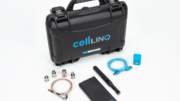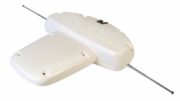Friends, this is another question that came through our award-winning tech support lines and I thought it would be perfect for an article. There’s a lot to talk about when we talk about amplifiers, and if you want to read some of the many articles I’ve written about them, use the search box at the top of this blog to search for “amplifier.”
How amplifiers work with digital signals
An amplifier is really a pretty simple device. Amplifiers today are very much like the first ones created in the 19th century. The principle is very basic. If you apply a lot of electricity to a signal, that electricity takes on the characteristics of that signal. Amplification is a basic part of not only broadcasting but every single electronic device we have.
When we say “digital signals,” we actually mean “digital data on an analog carrier.” A truly digital signal wouldn’t be possible in the real world, where nothing is truly “on” or “off.” But no matter what term we use, digital data behaves differently from analog data. That’s important to know when you’re trying to amplify digital stuff.
When you’re amplifying a basic analog signal, it works the way your brain expects it to. The little waves turn into big waves. When you’re amplifying a digital signal, the ones and zeros turn into bigger ones and zeros, sure. But that doesn’t mean they’re any easier to decode. The only thing a digital signal gets from an amplifier is (hopefully anyway) a bigger distinction between the signal itself and the noise that’s present in every line. Amplifiers are generally less useful in situations when you’re using digital data because unlike analog signal amplification, you’re not really able to tell more about the signal than you did before.
The 25dB amplifier question
Our customer told us they wanted to amplify an antenna signal by 50dB. They asked if they could do that by running two 25dB amplifiers in series. While the basic answer is mostly “yes,” there’s more to consider.
If you connect two amplifiers in series, you are also adding a lot of noise, and you’re losing a bit of signal to the connectors and cables between them. So a pair of 25dB amplifiers would probably net you about 46dB, not 50. Still, that’s not really the point. The point is that doing all this amplification probably won’t help you and might just make things worse.
Every device (like a TV or satellite receiver) has what’s called an input window. That’s the range of signal strengths that it’s expecting to get. If your signal is weaker, it probably won’t work. If it’s stronger, it will probably overload the device’s electronics, potentially destroying them.
If you take an antenna signal and pump it up by almost 50dB, you’re very likely to be outside the input window. The best case scenario is that the TV just doesn’t receive the signal that well. Like someone talking too close to a microphone, the signal can get distorted and work even worse than it did if it was unamplified. The worst case scenario is permanent damage to your television.
Here’s the bottom line: if you’re a regular person in a regular home, you don’t need 50dB amplification. If a signal is so far below the input window that you’d need a 50dB amp, chances are it’s too weak to be useful, period.
So when, if ever, would you use 50dB amplification?
In a system with digital signals, the only reason to amplify is to overcome the loss caused by long cable runs or too many splitters. Generally speaking, you’ll lose about 6dB of signal for every 100 feet of cable, and you’ll lose about 14dB of signal from every 8-way splitter. If you were running 800 feet of cable, or using four 8-way splitters, each connected to the one before it, your loss could get to 50dB. Those might seem like pretty crazy situations, but they do happen in places like hotels where one source feeds hundreds of TVs.
When you’re working with such an extreme need for amplification, you’ll generally use low-noise amps and cable that’s designed to have less loss over long runs. If you don’t, you risk increasing the amount of noise in the system. Remember that the whole purpose of an amplifier is to overcome noise. If your amplifiers are actually adding noise, they aren’t doing what you need.
Installing a large TV system? Let us help
If you are actually in a situation where you need this large amount of amplification, you probably need some professional help. Let the experts at Signal Connect take care of you! We can help plan your system, provide a bill of materials, and even recommend a local installation pro! We’re here to take all the stress away, and give you the project you want without all the heartache.
Call us now at 888-233-7563 during East Coast business hours. If it’s after hours, no problem! Fill out the form at the bottom of this article. We’ll get right back to you!





